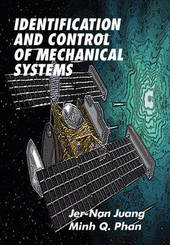
|
Identification and Control of Mechanical Systems
Hardback
Main Details
| Title |
Identification and Control of Mechanical Systems
|
| Authors and Contributors |
By (author) Jer-Nan Juang
|
|
By (author) Minh Q. Phan
|
| Physical Properties |
| Format:Hardback | | Pages:352 | | Dimensions(mm): Height 244,Width 170 |
|
| Category/Genre | Mechanical engineering |
|---|
| ISBN/Barcode |
9780521783552
|
| Classifications | Dewey:620.37 |
|---|
| Audience | | Tertiary Education (US: College) | | Professional & Vocational | |
|---|
| Illustrations |
83 Line drawings, unspecified
|
|
Publishing Details |
| Publisher |
Cambridge University Press
|
| Imprint |
Cambridge University Press
|
| Publication Date |
6 August 2001 |
| Publication Country |
United Kingdom
|
Description
The control of vibrating systems is a significant issue in the design of aircraft, spacecraft, bridges, and high-rise buildings. This book discusses the control of vibrating systems, integrating structural dynamics, vibration analysis, modern control, and system identification. Integrating these subjects is an important feature in that engineers will need only one book, rather than several texts or courses, to solve vibration control problems. The book begins with a review of basic mathematics needed to understand subsequent material. Chapters then cover recent and valuable developments in aerospace control and identification theory, including virtual passive control, observer and state-space identification, and data-based controller synthesis. Many practical issues and applications are addressed, with examples showing how various methods are applied to real systems. Some methods show the close integration of system identification and control theory from the state-space perspective, rather than from the traditional input-output model perspective of adaptive control. This text will be useful for advanced undergraduate and beginning graduate students in aerospace, mechanical, and civil engineering, as well as for practising engineers.
Reviews'The book's scope and coverage fills avoid in the area it set out to do in a very readable and instructional way.' International Journal of Robust Nonlinear Control
|